The Class-A Amplifier Site
This page was translated November 2012
Please note that when translating this article I tried to keep as close as possible to the original text, though a few changes have had to be made to ensure that the translation makes sense. Whilst reading the article, please bear in mind the following alterative meanings for some of the translated words: batch - type; saturation - onset of clipping; rate of distortion - distortion level; offset - drift; enclosure - speaker. There are others as well, some of which are close to impossible to translate accurately.
8W Amplifier
« Le Monstre »
The Power
Jean Hiraga
(l’Audiophile No. 29)
Number 27 of the assembly described Audiophile amplifier transistor "The Monster". Assembly designed according to their extreme high definition sounds more complex. His palette are natural, rich hallucinating, that we can hardly meet as few triode tube amplifiers handcrafted already described in these pages, that we had thought lost forever on transistorized circuits, assembly "The Monster" was attempting to give all its colors, even in its halftones more subtle. As always, a simple pattern, original, specially selected active components, a careful selection of passive components. "The Monster" must be understood primarily as an assembly simple, powerful, but with which the amount of information collected is such that it can be compared this time to unashamedly amplifications such as "300 B". The reader will find the details of the diet.
Foreword
Since the first issue of Audiophile, he had often been discussed sometimes curious about a new vision for high quality sound reproduction. Concerned about some of these methods are simple, effective, providing quick access to a level of sound quality significantly. Other words opened a universe still poorly understood "its components" of contacts covers, trays, cables, power supplies or fixtures huge tube. Questionable, discussed, misunderstood or appreciated, it is very gratifying, in 1983, a large majority of aircraft quality, high-end or "esoteric" made ??a big effort in this direction. Some manufacturers return to simple editing and performance. Others do not hesitate to use batteries for power circuits of low power consumption. Sometimes, regulated power supplies disappear and are replaced by cells in RC filtering capabilities of high value. Some others forget what had been said about ten years ago and rediscovering the benefits of class A, tray liners or well-studied high-performance speakers.
But there is no doubt that only the harmonious conjunction, full of common sense. balanced the vast majority of these conditions to be met to open the door on the upper floors. What is found only rarely, despite the good intentions or some good predispositions. Up to a certain percentage of misallocated efforts, the results are felt very little. Print stagnate around in circles. In addition, the system begins to surprise, move, but with "ups and downs", characteristic of a developed system still imperfect yet some possibilities. Close to perfection, the system within seconds of listening, "transports" the listener, so that the rock fan could happen to feel shivers listening to Debussy and Mahler . The amount of information is reproduced as the message "Password", carrying everything the composer, performer want to feel, to emphasize, do listen. If the message "pass" in a case, do "not go" in the other, the whole value of what music you listen to depends. Under these conditions, there would be no question of speaking of "ultimate improvements bordering on ridiculous" but almost a matter of "life or death" of high fidelity sound reproduction.
"The Monster", for the same reasons, could not withstand the effects of a + / - 12 V current.
Supply Current
Indispensable volume often leafminer, feeding the most common electronic circuits is made ??from a power transformer, diode rectifier, filter networks. These circuits must be well designed, generously sized, stable, able to provide a current, a voltage as perfect as possible. In practice, if one chooses a class B amplifier, 2 x 100 W loaded speaker 8ohm impedance , we see that s diet can be requested by peaks 7 A, they should not provided disturb the stability of the power supply. It must still remain indifferent to transient voltage variations, parasites that contain the sector and should not be influenced either by circuits located in its vicinity: FM tuners, tape recorders, motors, switches on and off, any power switching used in some recent devices. Commercially, it must still remain compact, lightweight, a reduced cost. Contradictions, limitations, compromises reached will leave power on a flawed "audiophile".
The most common mounting, as seen in Figure 1 consists of a transformer (EI, C. Double C, torus, etc..) With a primary, a secondary midpoint of a rectifier bridge with silicon diodes and filtering capacitors. To better withstand variations primary and secondary transformer should be oversized filter capacitors to be of relatively high value. In this condition already more favorable, the diodes, the transformer, the fuse must be able to support the load current of the capacitor at the time of power up. If already, you are limited by the cost, footprint, we can do no wrong to a compromise. In terms of performance is limited by the loss brought by the diodes, the windings of the transformer, by volume, the magnetic characteristics of the sheets. For a current transformer, the calculations of maximum induction (Bm) of magnetic loss in the sheets (P) and the loss in the windings (P c) are performed as follows:
Bm = E1 (Wb/m^2) (1)
4 Kf n1 A
Pi = dh f Bm^2 + de ( t f Kf Bm )^2 (W/kg) (2)
100 100
Pc = Km I1 (r1 + r2) (W) (3)
with E1: primary voltage; Kf: rate waveform; n1: number of turns primary A: sectional area of the circuit magnetic dh, of: the quality factor of sheets; r1, r2: primary resistance, resistance to the secondary Km: report impedance / resistance; I1: primary current.
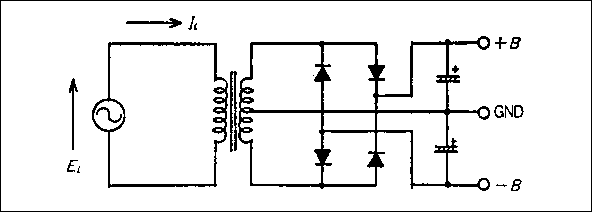
Fig. 1: Power current transformer, rectifiers and capacitors.
As indicated in the formulas, the loss in the sheets, independent of the load is proportional to f.Bm ^ 2. As for the loss in the windings, this time is dependent of the load current and the resistance of the windings. If, for economic reasons, for reasons of weight on congestion reduces the volume of plates, the volume of copper windings, one faces the problem of overheating. High fidelity "general public", the compactness of the devices, the problems of cost, weight, stray radiation are tradeoffs of having use of power stages operating in Class B, Class A "assisted" an abnormally high heat that can occur that during a prolonged operation at full power. Power transformer, beaming little as plates made ??from low loss is a low cost because of its volume. In a resolutely "Audiophile", the transformer must be oversized. The secondary charged by rectifiers, capacity can not produce a signal pins perfectly sinusoidal (Figure 2) and oversizing is advantageous. For cons, the assembly will not be immune to variations sector (not merely a volt or two), even after two RC and despite the use of high value capacitors (100000 uF 20 V for voltage Power, for example). To a preamplifier, a filter really good and especially independent small variations sector must have more than six RC or LC (which is even better). This was particularly the case tube preamplifier circuit described in n 0 21 Audiophile. If it is, even in low-voltage currents much higher, the realization is not practical (congestion, high wattage resistors, heating). In addition, if class A, we want to get a really stable supply, this condition requires the use of very high value capacitors. In one embodiment commercial quality amplifiers, 20 W class A is a good approach: highly oversized transformer, capacitors totaling 408,000 uF. In the case of the "Monster", operating from a power supply of + / - 12 V , we will need something more stable.

Fig. 2 Shape of the signal obtained on the secondary charged by the rectifier bridge
and filtering capabilities. Out the saturation of the sinusoid.
Regulated power supplies, power supplies with high efficiency
Power supplies with high efficiency, type a cutting triac phase control and to choppers have exceptional performance advantage: work in pulse transformers, whose performance is such that they can be reduced in volume, transistors working / break reducing the collector dissipation, control signals closely spaced squares.
3 illustrates an example of a power triac phase control, for which the parameters of current and output voltage Eo and Io are represented. This high efficiency mounting ment can be improved by removing the secondary triacs, by use of operational amplifiers, connected to a photo-coupler can thereby control the primary trigger the triac. Reduction of cost, size of the transformer, significant performance improvement of stability, insensitivity to variations in supply voltage, the big drawback in this kind of circuit is, apart from the spectral quality control which will be discussed further, the mechanical noise of the transformer working in pulsed mode. It must be absolutely high quality impregnated mounted on shock absorbing suspension, all not to radiate. Figure 4 shows the general appearance of this type of installation.
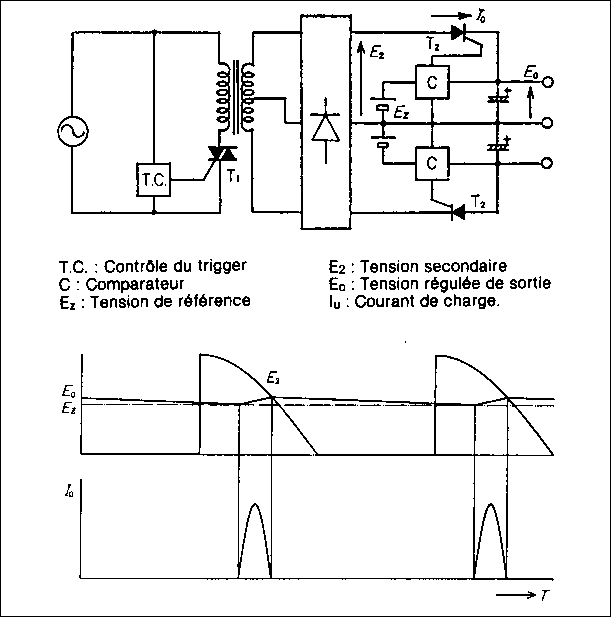
Fig. 3: High Efficiency Power and control triac phase,
the voltage and current output.
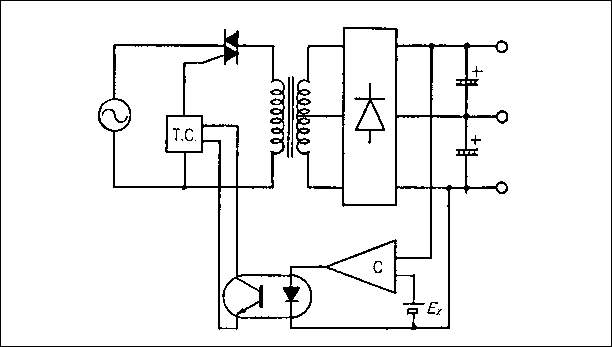
Fig. 4: An improved version of the power supply of Figure 3. Note the presence of a
operational amplifier. a photocoupler acting on the input triac.
On the power supply, shown briefly in Figure 5, we see that the output voltage Vav, obtained from signals spaced squares (Ton, Toff) and controlled amplitude Vo, the value of Vav is obtained after filtering of:
Vav = Ton Vo_
Ton + Toff
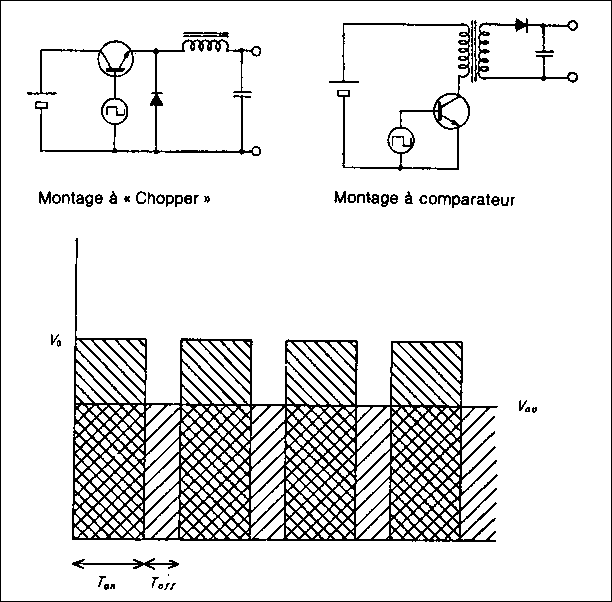
Fig. 5: SMPS. Principle and form of the output signal before and after control.
The yield is particularly high values, other advantages is the absence of residue 50 or 100 Hz, low impedance, a very good regulation. But the best power supplies, relatively expensive and bulky enough to have one big flaw annoying stray radiation where the requirement to use multiple shields. Another default is to disrupt the industry itself. In terms of spectral purity control this assembly is only moderately effective, despite all precautions, despite the advertising effects with the power supply as the ultimate refinement in power, that n ' is only partly true. In fact, there has been a low distortion amplifier circuit, fed either normal (bridge rectifier, resistors, capacitors, filtering Pi) is using this kind of editing could make significant differences in the parameter distortion / power, what is seen in FIG 6. The difference is due, in the case of the switching power supply, the residual noise in the common mode. This is what still shows the spectral analysis (Fig. 7). In the best cases, including the power of this type often used in VCRs, in compact disk players, can hardly exceed the residual noise in the performance of the figure 8.
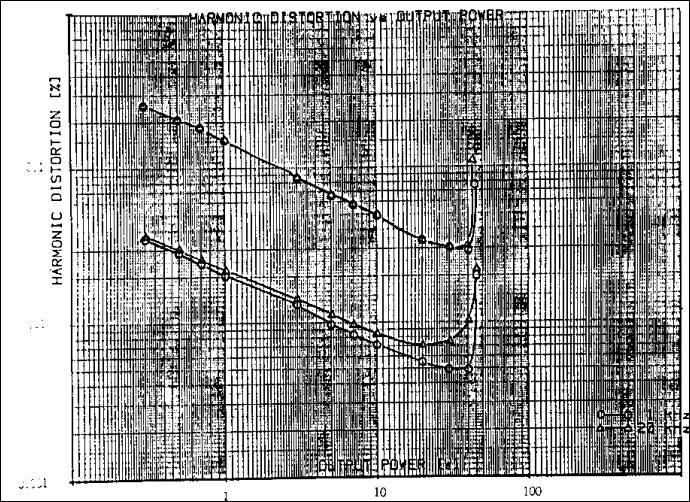
Fig. 6: Parameters distortion / power amplifier powered either by a switching power supply of medium quality (upper curve) or with a mounting current (transformer, diodes, filtering Pi) (lower curve) Noise residual common mode of the switching power supply is responsible for the distortion I'augmentation found.
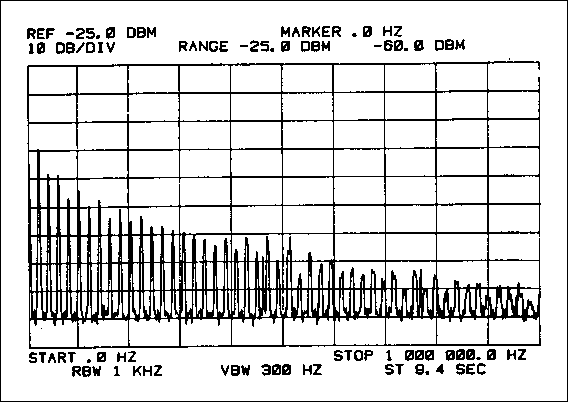
Fig. 7: Spectral analysis of the residual noise produced by I'alimentation
Switching used in Figure 6.
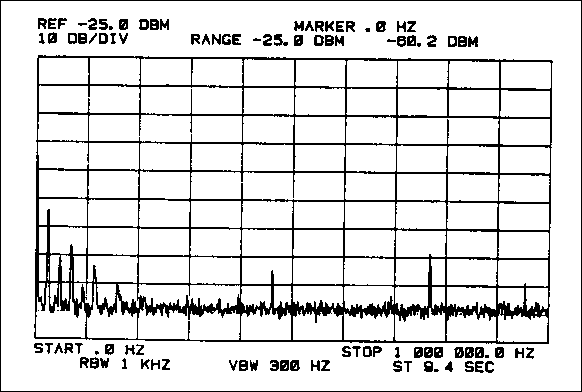
Fig. 8: noise spectrum of a switching power supply quality. We note
However, the presence of several harmonics.
In addition, employees head filters sectors will be insufficient to fully protect parasites other links provided power supply current. In sum, few benefits, most technical sales on the reverse is the appearance of several drawbacks.
We will then return to normal power, which results in residual noise spectrum (Fig. 9) exceeds that of the best power supplies.
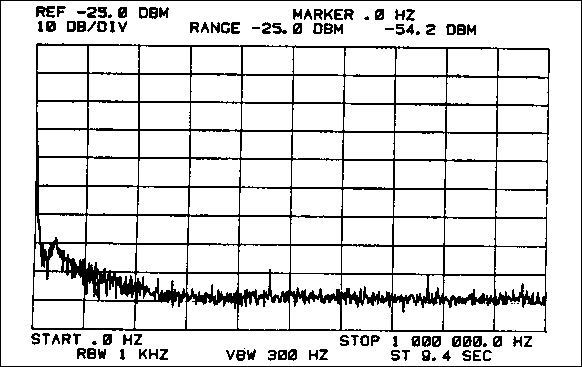
Fig. 9: noise spectrum of a conventional power supply to filter Pi simple. The result is significantly
higher than the versions with high efficiency despite lower scores on other parameters.
The power of "Monster"
Of great simplicity, the supply of the class A amplifier 2 x 8 W is carried out by lead-acid batteries connected to the capacitors. On the one hand, the scheme was designed for a power supply + / - 12 V. On the other hand, consumption, reasonable autonomy allows ample before recharging batteries.
Usually, the residual noise of the diet, not stabilized, is -70 dB to Waste: filtering noise due to rectifier diodes. Below is background noise, snoring frequency 100, 150 and 200 Hz filter A more serious with a self in head, difficult to achieve in a small volume but to be appreciable inductance and low series resistance , provides a reduction of noise up to 90dB. By cons circuits Annex amplifier fed by lower voltages than the output stage and enjoyed by zener diodes can not expect to exceed a noise down the order of -75 dB, unless the diodes are connected in parallel to capacitors of relatively high value (10 to 50 uF). But even in this case the limit is around -90 dB. Without going into the details of regulated power supplies, sometimes extremely fast and silent under battery power (which would be impossible in the case of the amplifier 2 x 8 W), the latter being carefully decoupled to reduce noise is up -120 dB to -110. This solution is very significant in the case of feed assemblies such as preamplifiers.
Beyond -120 dB, the quality of components becomes increasingly critical. The leakage current of batteries, capacitors becomes a source of noise. The current flow through resistors RC filtering component is sufficient to produce a certain noise level as low as it is. It lies between -110 and -130 dB. The aim is the latest limits offered by the components. The selected combination: battery + capacitor is not only simple, but also accessing extremely low impedance values, opportunities in huge transient current, values ??of residual noise features; few milliohms, more than 1000 A near -144 dB ... all-ment is total absence of any coloring due to components such as diodes, transformers, magnetic sheets, coils, resistors, transistors or integrated circuits.
In fact, it was also a unique solution because we notice an important point of the circuit: the common power input stages with those of output, which requires unconditional stability. In a mount such that the tube 300B, power 8 W about, it is favored by the supply voltages 30 times, the input signal remains the same in both cases. If the supply is carried out using voltages as low as + / - 12V, it is natural to think that the stability of the power supply must significantly exceed the level of a small daily diet. The first confirmations of the decisive advantage of the power amplifiers power by battery back to 1973, when a Japanese or Mr. Hata (which had been discussed in these pages about ionic tweeters) before realized, for personal use amplifier 2 x 25 W, this from hybrid circuits (yet very average performance), assembly was powered by batteries 70 AH (4 or 2 x 24 V).
This experience was herself from another circa 1965 by the president of a Japanese firm accumulators. The latter, well placed to provide batteries, did not hesitate to make several pieces of his apartment but removable waterproof floor, beneath which were dozens of batteries. He thus obtained voltages of 2.5 V, 60 V and 250 V which fed his amp with 2A3 tube triodes. In both cases, results were obtained absolutely amazing, extreme severe acute extreme.
In the first, about the degree of definition allowed some disk mounting a noise band, the sound of fingers hitting the keys on the piano, the sound of breathing, an infinite number of micro-details from the extreme blur to the extreme precision, which was impossible to pass a drive on other systems, so the loss of audio information was marked. In addition, the hybrid circuit, mainly recognized for its characteristics of aggression in the acute, lost much of a failure I was assigned to the active component. In the second case, the tube triode 2A3, still considered inferior to others such as 300B, 845, 252A, 275A on issues of transparency, definition, finesse, qualities found hard to believe, as the sound of 2A3 tube (most common in Japan at the time of the great fashion triode tubes) thought to be "identified" as the limits of its possibilities seemed to be well established.
If in both cases the vibrato of the violin in Massenet's Thais password, s i guitar Manitas de Plata password, if in all other cases it feels like a blockage, something that does more than you do feels more as well as a sustained note in a piece of Chopin, we can not talk about such sophistications circuits, complications ridiculous. The message passes or does not pass. Preferences or may no longer be needed. Provided of course a link in the chain is not missing or has not been broken unintentionally. It is ridiculous to see again in 1983 comparative testing of cables leading to no result edifying because of little speakers that can be used to extinguish candles, "dampers".
PCB
In No. 27 we noticed an error in setting input transistors. Figure 10 shows the printed circuit on which transistors 2SK170 and 2SJ74 ranis were in the right direction. For printed circuit, almost symmetrical, it should be noted that the resistance of 47 kohm, the 10 ohm will identify the direction of the circuit, the copper side. The output transistors are mounted on the radiator, a mica platelet insulating the metal flange thereof electrical contact with the radiators. We must also use silicone grease to provide better heat conduction wiring mass can cause problems hooking HF should connect the ground input jacks with a single wire coming to the central mass of the supply. From this point, two son leave to lead mass on each plate. For the mass of outputs, connecting the central ground of the power supply to each of the two output terminals. If the trend hook can reduce bandwidth by paralleling the 220 ohm resistor capacitor value between 4700 and 10000 pF pF. This value may seem high, but we think that the resistance against negative feedback is only 220 ohm.

Fig. 10: Layout component side view.
Steps
Figure 11 shows the result of analysis of the residual noise on a normal diet, equipped with a filtering Pi and filter capacitors 180 000 uF. Despite the presence of the series resistor of high value capacitors, there is the presence of a light filtering residue, even if i thereof is low enough to avoid the risk of providing a level of snoring sound.
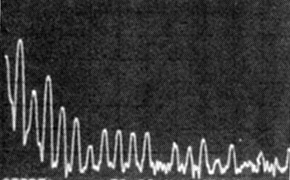
Fig. 11: noise spectrum of a 25 V power supply, filtering
Pi, equipped with 180,000 uF capacitors.
Figure 12, A and B shows that the power of the "Monster" was very much higher than the measurement possibilities, limited to about -120 dB. This confirms the value of -140 dB or better, in this case the circuit is powered by batteries, unplugged.
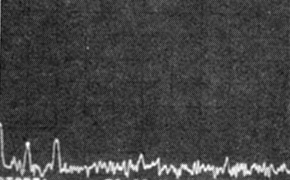
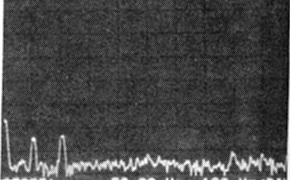
Fig. 12: Measurement of residual noise power with batteries. Left noise
residual spectrum analyzer. Right: power supply noise. The small
differences are mainly due to cable measures.
Figure 13 shows the spectrum distortion of the amplifier, which is seen to degraded very regular. We also find c, which is reassuring for other frequencies and other output levels.
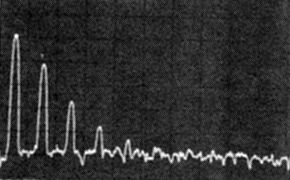
Fig. 13: Spectrum distortion amplifier 8 W "The Monster".
Figure 14 shows the components used for the feeding experiment. Accumulators its capacity of 40 AH, capable of delivering more than 170 A for several seconds. In parailèle thereon are capacitors whose capacitance value exceeds 1 Farad. Figure 15 shows schematically the appearance of power.
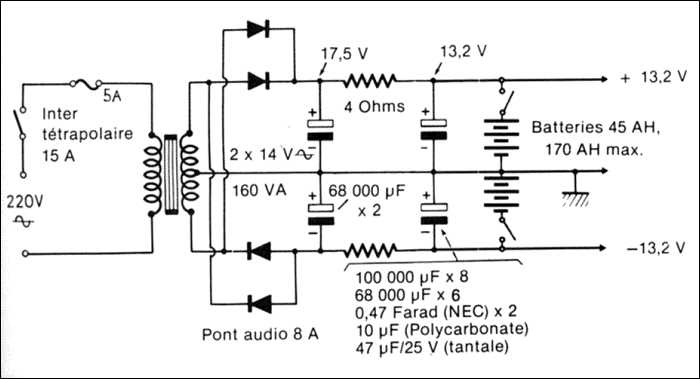
Fig. 14: Block diagram of the power supply. Components are mentioned in the configuration we have developed more done. It is obvious that it is possible firstly to use a less elaborate power as indicated by the data in three configurations photos.
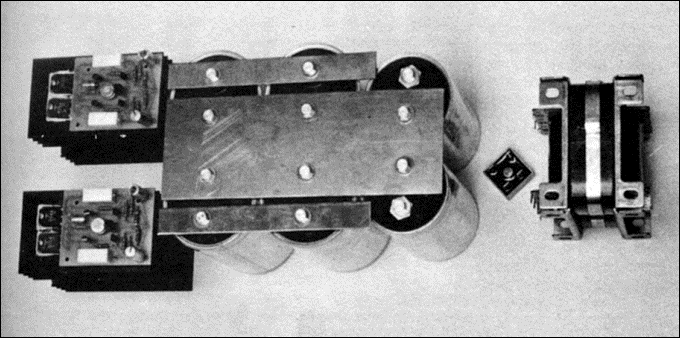
Fig. 15: No. 1 Configuration of the amplifier 8 W. The power supply uses 6 x 68,000 uF.
Resistance of 4 ohm filtering does not appear.
In an upcoming issue, we return to comparative listening. Already, the first enthusiasts who have built this amplifier will immediately note the impression of enormous power reserves, a serious natural light but firm and "fast", a very detailed midrange, natural, all being able faith to reproduce sound clearly plans ahead of pregnant or far behind. As for the sense of stability seating sounds, power plays a major role. Finally, the big surprise, you may notice a power of 8 W is sufficient for a good majority of cases.
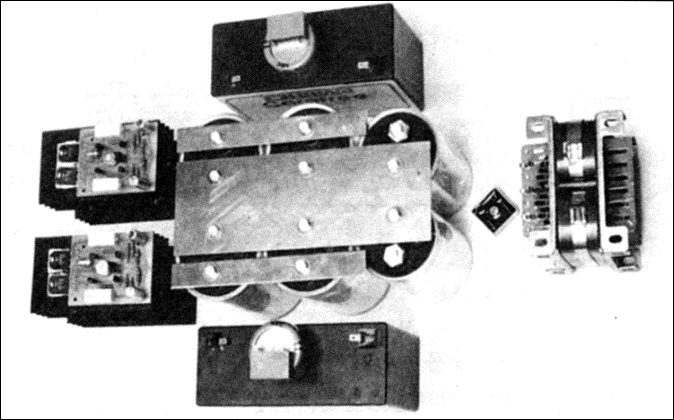
Fig. 16: No. 2 Configuration on the amplifier 8 W. Batteries 12 V, 6 Ah are
added compared to configuration 1. Supercapas of 0.47 F, decoupled
capacitors polycarbonate 2.2 uF are placed in parallel with batteries.
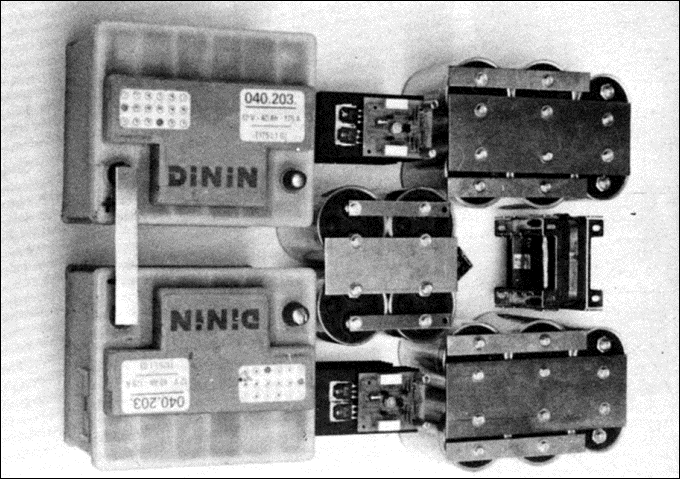
Fig. 17: No. 3 Configuration on the amplifier 8 W. Components
correspond to the nomenclature of Figure 14.
HISTORY: Page created 01/08/2001